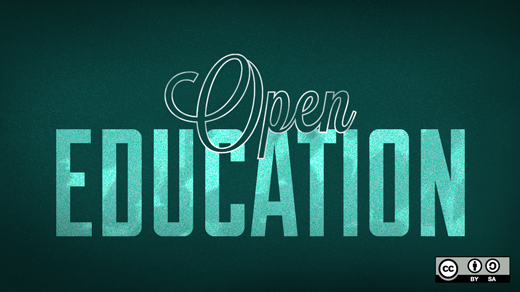
Will OER = Open for business when it comes to learning games or will it further the diminish the perceived cost of digital tools?
It’s hard to argue against Open Educational Resources (OER) – those teaching tools and materials that are free from copyright and can be downloaded and modified by any teacher. But as the U.S. Department of Education expands its focus on these tools, some worry that a new flood of teaching content free to use may make the already difficult world of selling new and high-end learning games to schools that much harder.
The Department of Education this month published new rules that would require “grantees awarded direct competitive grant funds openly license to the public all copyrightable intellectual property created with Department grant funds.” This means that the default position is that any organization that receives federal grants would place the resulting products – be they lesson plans, teaching resources or even games – into the public domain when completed.
It is part of a larger initiative the department is pushing dubbed “#GoOpen.” The initiative seems to grow out of the government’s moves to generate more resources that take advantage of the massive investment in wifi and Internet infrastructure the department has made in recent years. It also, according to the statements from the departing Secretary of Education Arne Duncan, has to do with increasing access to resources for those lower income and more rural schools.
“In order to ensure that all students – no matter their zip code – have access to high-quality learning resources, we are encouraging districts and states to move away from traditional textbooks and toward freely accessible, openly-licensed materials,” Duncan said in a statement. “Districts across the country are transforming learning by using materials that can be constantly updated and adjusted to meet students’ needs.”
So what does this all mean for game developers?
The short, if less-than-helpful, answer is we’re not sure. On the one hand, prompting more teachers to turn to digital tools and resources is never a bad thing. As past reporting has noted, teachers still rely heavily on what their colleagues tell them and their own experiences when it comes to finding games and other digital tools and so the government’s push to create new incentives for teachers to go out and find new material could help spur creativity in teachers that have been slow to jump on the digital bandwagon.
But the bad news may be a further blow to the idea of quality educational resources being of monetary value to the districts and teachers. In a world where there are entire databases of free tools, why pay for a digital game?
Still, a closer reading of what the department is up to may give game developers (but not textbook publishers) reasons to be hopeful. Although the statements have stressed the idea of access and equity in pushing open resources, the department also sounds as if they hope that OER may free up money currently going to pay for textbooks. The #GoOpen website established by Education notes, “Switching to educational materials that are openly licensed enables schools to repurpose funding spent on static textbooks for other pressing needs, such as investing in the transition to digital learning. In some districts, replacing just one textbook has made tens of thousands of dollars available for other purposes.” The next sentence also stresses that textbooks are inherently dated and could be replaced by digital resources.
This effort, if it truly goes in the direction the department says it’s intended to go could be one critical step to freeing up the largest chunk of school money ever to be spent on new digital content. Up until now, most districts have only used so-called supplemental budgets to purchase most digital games and tools. The core budget needs of textbooks was never included in the pool of money schools had to spend. If OER’s can free that up some, schools may soon have textbook money to spend on digital games and tools.
Nichole Dobo of the education news service Hechinger Report noted the OER debate could grow in coming years, writing, “The K-12 textbook market is a multi-billion-dollar industry, and powerful players have a lot at stake. If more schools opt out of using paid books, it could reshape the way paid publishers do business. A little competition might not be a bad thing – if we trust schools to sift through the free material and find something better than what they can buy now.”
To help with the sifting the new #GoOpen initiative announced that Edmodo and Amazon would help establish and run an open, taggable database of OER content in a new Learning Registry. The new registry aims to develop a rich set of metadata to help teachers find age- and subject-appropriate content to use in the classroom.
So the Department of Education’s new push could go either way for learning game developers. If it goes the way some seem to hope, the far larger budgets connected to textbooks may soon become more available for schools to invest in digital learning tools, including games. The danger is if the perception is most educational content, like OERs, are free than why pay for digital games.
The department announced six school districts as OER test beds in their announcement and so, perhaps, they will tell us what going open may mean for the learning game industry.
